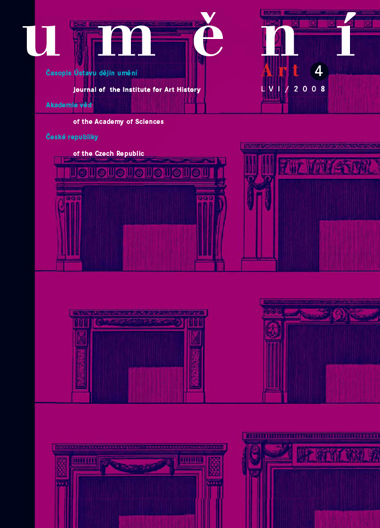Jiří Slavík
Dopisy Jana Štursy Josefu Binkovi
Archives contain the as yet unpublished letters of Jan Štursa (1880-1925), a top Czech sculptor of the first half of the 20th century, to Josef Binko (1879-1960), a tanning entrepreneur from the East Bohemian town of Krucemburk (in 1949-1993 Křížová) and today a figure rediscovered as a representative of Czech secessionist pictorial photography. The young Štursa was connected with the Binko family as a distant relative, but he also shared a similar sensitivity and perceptiveness towards his native land and contemporary art and literature. Surviving correspondence from 1905-1916 provides an idea of this close link, and at the same time takes us deeper into the sculptor's inner world and gives us the opportunity to take a peek inside his rich and fateful internal divisions. Štursa's undisguised joy of life and pleasure from artistic creation, his still boyish wistfulness, resolve and vigour tended rapidly to alternate with fatalistic feelings of ruin, scepticism and a somewhat exaggerated hypochondria, accompanied in the early stages of his artistic career by genuine existential problems. The central theme of the letters presented here is connected with the commission and the task of creating a monumental cemetery tombstone for the Binko family (1905-1906), and we are able to follow its gradual creation. Consequently, we are again also able to identify the authorship of an often reproduced portrait from the artist's studio, in which Štursa poses, dressed in a sculpture's gown, alongside the just completed relief for the Krucemburk tomb. Alongside this commission the texts tell us about some other more or less well-known works that emerged during this period. Josef Binko was a great admirer of Štursa's work and in his modernist Red Villa (1908-1909), designed by his friend and future brother-in-law, the important Czech architect Josef Gočár (1880-1945), he cultivated a collection of art, one piece of which was the bronze casting of the famous work Puberty (1905). Other information of interest from the letters is connected with the sculptur's first study trip to Italy (1907), paid for out of a Hlávka scholarship, which in previous art history is linked just to a several-week stay in Rome. These letters are another contribution to the already published personal correspondence of Jan Štursa, compiled at the start of the 1960s by Jiří Šebek.
Full-text in the Digital Library of the Czech Academy of Sciences:
https://kramerius.lib.cas.cz/uuid/uuid:e199c7e1-f293-1234-e236-524c96e7af83
< back

